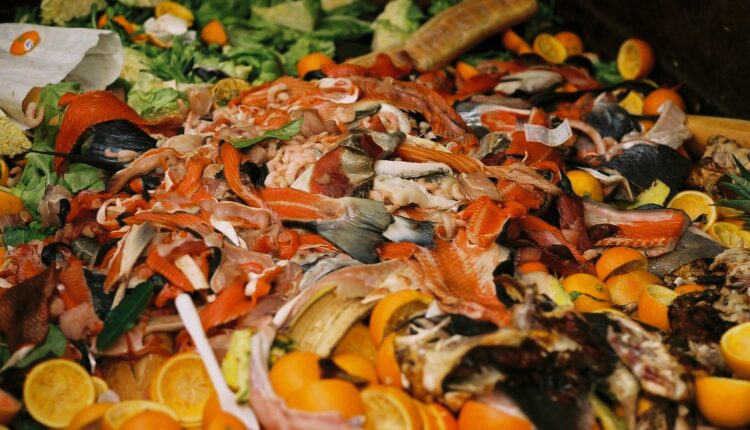Understanding agricultural waste from Scientific Perspective
India, an agrarian economy, produces over 500 million tons of agricultural waste annually. Unfortunately, much of this valuable resource remains untapped, often causing environmental challenges like air pollution and greenhouse gas emissions. Practices like stubble burning in northern states such as Punjab, Haryana, and Uttar Pradesh exacerbate these issues, creating a recurring cycle of environmental and health concerns. However, agricultural waste is not merely a problem—it is a transformative opportunity to foster sustainability, economic growth, and rural empowerment.
Indian women farmers, who contribute significantly to agriculture through harvesting, threshing, and post-harvest management, are uniquely positioned to lead the transformation of agricultural waste into valuable resources. By combining traditional knowledge with modern technologies, they can spearhead efforts to turn waste into wealth, creating a ripple effect of benefits for their families, communities, and the environment.
Common Types of Agricultural Waste and Their Transformative Potential
1. Rice Straw
Current Practice: Farmers often burn rice straw after harvest to clear fields for subsequent planting. This practice contributes to severe air pollution, smog, and respiratory issues, particularly in northern India.
Waste-to-Wealth Solutions:
Biogas Production: Rice straw can be processed in biogas plants to generate methane, providing cooking fuel or electricity. Villages in Tamil Nadu have adopted small biogas units, significantly reducing dependence on firewood.
Composting: Mixing rice straw with animal dung produces compost, enriching soil fertility.
• Industrial Use: In states like Punjab, rice straw is repurposed into bioethanol and biodegradable packaging materials.
2. Sugarcane Bagasse
• Current Practice: A byproduct of sugar mills, bagasse is often discarded or underutilized.
Waste-to-Wealth Solutions:
Bioenergy: Sugar mills in Maharashtra and Uttar Pradesh generate electricity using bagasse, a model replicable at smaller community levels.
• Organic Fertilizers: Bagasse can be converted into biochar or compost to improve soil health.
• Eco-Friendly Products: Women-led groups in Karnataka craft biodegradable plates and cutlery from bagasse, creating additional income streams.
3. Vegetable and Fruit Waste
• Current Practice: Spoiled produce, peels, and rejects are frequently discarded, forming waste heaps in rural areas.
Waste-to-Wealth Solutions:
Vermicomposting: Women farmers in Bihar use earthworms to transform organic waste into high-demand manure for urban gardeners.
Biogas Production: Fruit waste, such as banana and mango leftovers, is converted into cooking gas in Maharashtra.
Value-Added Products: Fruit peels are repurposed into natural dyes and organic pesticides, gaining traction in organic farming.
4. Coconut and Areca Nut Waste
• Current Practice: Shells and husks are discarded or burnt, causing pollution.
Waste-to-Wealth Solutions:
• Coconut Fibre Products: Women in Kerala produce coir items such as mats, ropes, and brushes.
•Bioenergy: Coconut husks are converted into biomass briquettes, a cleaner alternative to firewood.
Benefits of Harnessing Agri-Waste for Indian Women Farmers
1. Economic Empowerment:
• Turning agri-waste into marketable products provides women with a sustainable income source. Women in Andhra Pradesh earn an additional ₹3,000–₹5,000 per month by producing organic manure.
2. Environmental Improvement:
• Reducing waste burning mitigates air pollution, improving health outcomes for rural communities.
Composting restores soil fertility, particularly in arid regions like Rajasthan.
3. Energy Security:
• Biogas systems offer clean cooking energy, reducing dependence on costly LPG cylinders, especially in states like Bihar and Jharkhand.
4. Sustainable Farming:
• Organic fertilizers decrease reliance on chemical alternatives, fostering healthier crops and long-term soil sustainability.
5. Community Leadership:
• Women-led waste management initiatives inspire others, transforming communities into hubs of eco-friendly innovation.
The Case for Waste-to-Wealth Models: An In-Depth Perspective
1. Environmental Impact Reduction
• The Problem: Practices like crop burning release harmful pollutants, including CO₂ and methane, resulting in smog and respiratory illnesses.
• Solution: Utilizing waste for compost, biogas, or biochar reduces emissions and improves air quality. In Madhya Pradesh, composting has led to cleaner air and fewer health issues among farming families.
2. Soil Health Restoration
• The Problem: Overuse of chemical fertilizers has degraded soil quality, reducing crop yields.
• Solution: Organic manure from agri-waste enriches soil, improves water retention, and promotes microbial activity. In Rajasthan, vermicomposting has rejuvenated barren soils, increasing agricultural productivity.
3. Economic Empowerment
• The Problem: Women farmers often lack access to additional income sources.
• Solution: Women-led SHGs (Self-Help Groups) in Tamil Nadu and Maharashtra have successfully marketed products like compost and vermicompost, significantly increasing household income.
4. Energy Generation
• The Problem: Rural households rely on firewood and kerosene, which are harmful and unsustainable.
• Solution: Community biogas plants using agri-waste provide clean energy for cooking and lighting, as seen in Bihar villages.
Scaling Waste-to-Wealth Models: Support Systems Needed
1. Government Initiatives:
• Subsidies for biogas plants and composting units.
• Awareness campaigns to educate farmers about waste-to-wealth opportunities.
2. Private Sector Collaboration:
• Market linkages for organic fertilizers, biogas, and eco-products.
• Partnerships with startups to develop innovative waste management technologies.
3. NGO and Community Support:
• Training programs to equip women with technical skills.
• Success stories, like SEWA’s initiatives, inspire rural adoption of waste management practices.
4. Education and Awareness:
• Integrating waste-to-wealth concepts into school curricula.
• Organizing workshops for young farmers.
Empowering Women as Change makers
Women farmers, as custodians of agricultural ecosystems, can lead waste-to-wealth initiatives, promoting cleaner villages, sustainable farming, and economic self-reliance. Training programs, financial support, and collaboration with NGOs and private entities are crucial for enabling women to transition from cultivators to eco-entrepreneurs.
The Scientific Perspective on Agri-Waste Management
From a scientific standpoint, agricultural waste is an untapped reservoir of organic carbon, essential nutrients, and potential energy. Studies have shown that crop residues like rice straw and sugarcane bagasse are rich in lignocellulosic material, which can be processed into bioethanol, a sustainable alternative to fossil fuels. The anaerobic digestion of agri-waste in biogas plants not only produces methane for energy but also results in digestate, a byproduct that can be used as organic fertilizer, reducing the need for chemical inputs. Scientists are also exploring the use of microbial treatments and enzymes to break down stubborn lignin in crop residues, making them easier to convert into bioenergy and compost. This interdisciplinary approach, combining biotechnology and agricultural science, has the potential to revolutionize waste management practices.
Additionally, researchers are focusing on the circular economy model, where agri-waste is continuously repurposed to minimize environmental impact. For example, biochar produced from agricultural residues not only sequesters carbon but also enhances soil fertility by improving water retention and nutrient availability. Studies on integrating such practices into smallholder farming systems have highlighted their capacity to reduce greenhouse gas emissions significantly. Furthermore, advancements in pyrolysis and fermentation technologies can process diverse types of agricultural waste, from fruit peels to coconut husks, into high-value products like biofertilizers and biodegradable plastics. By leveraging scientific innovations, India can position itself as a global leader in sustainable agricultural waste management while addressing pressing challenges like climate change and resource scarcity.
Examples of Scientific Innovations in Agri-Waste Management
1.Rice Straw to Bioethanol in Punjab
Punjab Agricultural University (PAU) has pioneered the development of technologies to convert rice straw into bioethanol, addressing the issue of stubble burning. Companies like Indian Oil Corporation have partnered with farmers to establish bio-refineries that use crop residues as feedstock for producing ethanol. This initiative not only reduces pollution but also provides farmers with an additional income stream.
2. Sugarcane Bagasse for Power Generation in Maharashtra
In Maharashtra, sugar mills extensively use sugarcane bagasse to generate electricity through cogeneration plants. These plants operate on the principle of using bagasse as a fuel source to produce both heat and power, reducing dependency on non-renewable energy sources. The surplus electricity is often fed into the local grid, benefiting the community.
3. Vermicomposting by Women SHGs in Bihar
Women self-help groups in Bihar have adopted vermicomposting, turning farm and kitchen waste into nutrient-rich organic manure. With support from organizations like NABARD, these women have successfully marketed their compost to urban gardeners and organic farmers, boosting their incomes while improving soil health.
4. Coconut Waste-Based Products in Kerala
Kerala’s coir industry is a prime example of utilizing coconut husks to create value-added products like mats, ropes, and brushes. Coir Board India has facilitated scientific advancements in processing techniques, making the industry more efficient and sustainable. The use of coir geo-textiles in infrastructure projects has further expanded the scope of this eco-friendly material.
5. Banana Waste Utilization in Tamil Nadu
Tamil Nadu farmers have collaborated with agricultural scientists to turn banana pseudo-stems into biodegradable plates and packaging materials. This innovation reduces plastic waste and provides an eco-friendly alternative for the packaging industry. The initiative also ensures that no part of the banana plant goes to waste, maximizing resource efficiency.
6. Biogas Plants in Villages of Jharkhand
In Jharkhand, community biogas plants powered by agricultural waste, cow dung, and kitchen scraps have been established with the support of government schemes like the National Biogas and Manure Management Programme (NBMMP). These plants provide clean energy to rural households, reducing dependency on firewood and improving indoor air quality.
7. Crop Residue Briquettes in Uttar Pradesh
Farmers in Uttar Pradesh, with assistance from agricultural research institutions, are converting crop residues into briquettes used as a cleaner fuel alternative to firewood. These briquettes are in high demand in industries and rural households, offering a practical solution to crop residue burning.
8. Fruit Waste to Biogas in Maharashtra
In Nashik, Maharashtra, a pilot project by the Indian Council of Agricultural Research (ICAR) focuses on converting fruit waste from large-scale mango and banana farms into biogas. The generated energy is used for both domestic and commercial purposes, showcasing how scientific interventions can turn waste into a valuable resource.n
Reimagining India’s Agricultural Landscape
India’s agricultural waste is a hidden treasure with immense potential. By adopting waste-to-wealth practices, women farmers can spearhead a movement toward cleaner environments, healthier families, and sustainable rural economies. With the right support, every woman farmer can become a change maker, transforming waste into wealth and paving the way for a prosperous future.
Let us envision a rural India where no residue is wasted, every household thrives on sustainable energy, and women farmers are celebrated as eco-innovators. This is not just an agricultural revolution—it is a societal transformation driven by resilience, creativity, and empowerment.
Contact us- If farmers want to share any valuable information or experiences related to farming, they can connect with us via phone or whatsApp at 9599273766 or you can write to us at [email protected]. Through Kisan of India, we will convey your message to the people, because we believe that if the farmers are advanced then the country is happy.
You can connect with Kisan of India on Facebook, Twitter, and WhatsApp and Subscribe to our YouTube channel.



